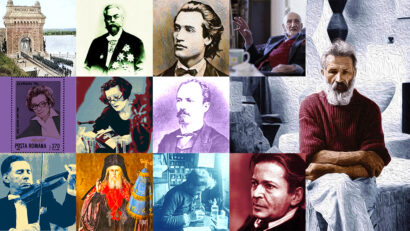The Fortress Square in Baia Mare
The central square in Baia Mare, dominated by Saint Stephen's Tower, was built in the 15th century.

Christine Leșcu, 03.06.2017, 14:04
Baia Mare, the residence of the County of
Maramures, one of the most picturesque areas in Northern Romania, was first
mentioned in historical documents as early as the 12th century. The
city is a symbol of multi-culturality and multi-ethnicity, with various ethnic
groups – Hungarian, Romanian and Saxon – living together in harmony. Evidence
of the long history of the city can been seen all over the place, although some
of its buildings and monuments have been left to decay. Their restoration also
entails including them into a project that can provide a modern function for an
old building and also including them in the city’s daily life.
This is the
situation of the central square in Baia Mare, dominated by Saint Stephen’s
Tower, built in the 15th century. Also, the square hosts the
foundations of the 1347 Gothic church, the Holy Trinity Roman-Catholic Church,
a former Jesuit monastery from the 18th century, and the Degenfeld
House, a compound of buildings erected in the 16th and 17th
century. St. Stephen’s Tower is the bell-tower of a former church whose patron
was the Holy King Stephen. Although the tower was built in the 15th
century, the church dates from an earlier date, sometime in the 14th
century.
The tower was built at the initiative of the Transylvanian Prince of
Hunedoara. Its building started in 1446 and was only completed in 1468, under
the rule of the Hungarian King Matei Corvin, Iancu of Hunedoara’s son. In 1847,
St. Stephen’s Church was dismantled, and only the tower was left standing. The
recent project to rehabilitate the central square, also known as the Fortress
Square, has focused particularly on bringing back to the city’s public memory
the most important ecclesiastic structure dating from the time when Baia Mare
was called Rivulus Dominarum (in English Ladies’ River), in the 14th
century.
Architect Stefan Paskucz, whose firm designed the rehabilitation
project, tells us more:
The aim of the project was to restore to the city its most notable
ecclesiastical building, St. Stephen’s Cathedral, to which St. Stephen’s Tower
is linked. Both structures date from the early days of Rivulus Dominarum, as
Baia Mare was called back then. The project sought to turn the central square into
an urban area serving a predominantly cultural purpose. I think we have managed
to achieve this aim. The square we see today has an entirely new feel to it. It
is both a place of inspiration and a place where people come together. It is
like a stage that can by itself generate cultural events, all of which take
place against the background provided by the historical remains unearthed
through this project. I’m referring to other churches brought to life by the
archaeological work and about which we knew a lot less than about St. Stephen’s
Church, the main building in the square, namely St. Catherine’s Church and St.
Mark’s Church. There are no less than five different churches within a surface
area of 4,000 square meters, and two of them are still standing, namely St.
Nicholas’ and the Holy Trinity Church, while the other three are in ruins.
The modernisation of the central
square and of St. Stephen’s Tower that dominates it also implied the addition
of some new elements in a way that does not alter the mediaeval appearance of
the whole ensemble. Architect Stefan Paskucz tells us about what was added:
It used to be impossible
to go up the tower. There used to be no access way for visitors, only a steep
staircase, as was common in mediaeval towers, that provided access to the
bell-ringer. So the tower has been redesigned and is today very popular with
visitors. We also restored its clock, which is more than 300 years old. It
dates, in fact, from 1670, and it’s one of the three clocks of its kind still
to be found in Europe. It was restored by a Dutch firm and is now working
properly, something no one believed could be possible. The aim of our project
was to give the central square in Baia Mare back to the city’s residents and
visitors and make it a popular public space. We believe we have achieved this
aim.
Tourists are not the only ones to
be impressed with the new appearance of the Fortress Square in Baia Mare, but
also international experts. The project was one of the 355 from around Europe
to earn a nomination to the Mies van Der Rohe Award, the European Union Prize for Contemporary Architecture.






























